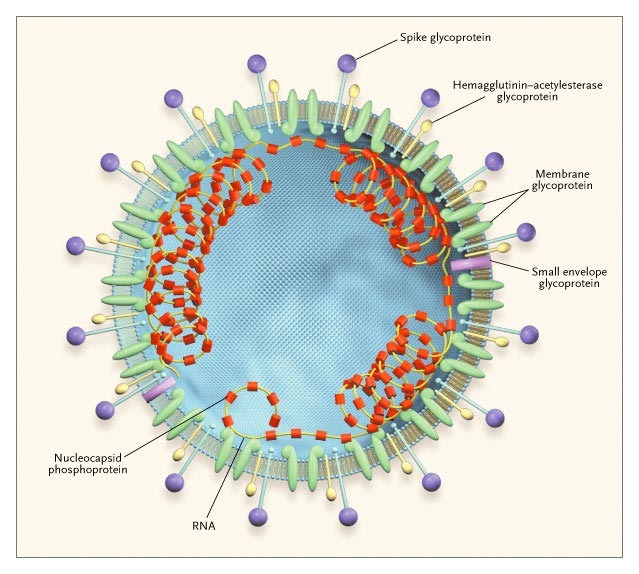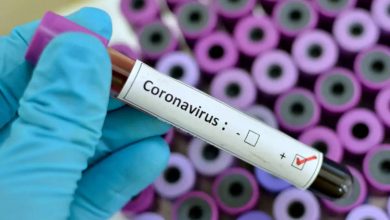The numbers in front of the Hb, or haemoglobin, a symbol in the form with the results
of a general blood test can reveal to the doctor the causes of low blood
pressure, dizziness, leg cramps of the patient, and also inform about imminent
serious threats. Timely identification of abnormalities and normalization of
haemoglobin concentration will help to avoid serious health problems. We are
talking about reducing the risks of heart attacks and strokes in people aged,
pathologies of child development, deterioration of the mother, and fetus during
pregnancy.
What is haemoglobin, and what are its functions?
Haemoglobin (Hb) is a complex iron-containing protein found in red blood cells (red blood cells) of blood and partially present in free form in plasma. It is he who
carries out the transfer of oxygen from the lungs to the cells and carbon
dioxide in the opposite direction. Figuratively speaking, an erythrocyte is a
kind of cargo ship cruising along with the bloodstream. Participation in gas
exchange is the most important, but not the only function of “blood balls.”
(from the Greek. Haima - “blood” + Latin. Globus - “ball”). Due to its unique
chemical properties, haemoglobin is a key element of the blood buffer system
that maintains the acid-base balance in the body. Hb binds and removes acidic
compounds at the cellular level (prevents acidosis - acidification of tissues
and blood). And in the lungs, where it enters in the form
So, haemoglobin is an essential element of life, and a pathological decrease in its concentration (anaemia or anaemia) can provoke fragility of nails
and hair, dry and peeling skin, muscle cramps, nausea and vomiting, dizziness
at best. The acute form of anaemia causes oxygen starvation of cells, leading to
fainting, hallucinations and fatal consequences - brain hypoxia, atrophy of
nerve cells, and paralysis of the respiratory system.
As should be regular:
The level of haemoglobin in our blood can increase and decrease slightly for fundamental
reasons. Haemoglobin renewal is associated with the life cycle of the red blood
cell to which it is attached. So, approximately every 120 days, part of the
haemoglobin molecules together with red blood cells are sent to the liver - for
cleavage and then synthesized again, joining the free red blood cell.
The amount of haemoglobin depends on age and gender, changes in the process of
bearing and giving birth to a child.
Haemoglobin is also influenced by specific working or living conditions (for example,
pilots and highland residents have increased rates), vegetarianism, and donation
(these factors, in contrast, reduce haemoglobin).
- For children from six months to 5 years - 110 g / l and above;
- For children: 5-11 years old - 115 g / l or more;
- For children 12-14 years old, as well as girls and women (15 years and older) - 120 g / l and above;
- For men: (15 years and older) - 130-160 g / l.
It is essential for pregnant women who provide minerals (including iron) for
themselves and the baby so that the haemoglobin level does not fall below 110 g
/ l. Note that, according to WHO, iron deficiency anaemia (IDA) is diagnosed in
38.2% of pregnant women on the planet. A deficiency of haemoglobin molecules can
occur after the 20th week of an “interesting situation”: due to an increase in
the volume of circulating blood, growing fetal needs, and a decrease in the
intake and absorption of iron due to toxicosis and gastrointestinal disorders.
At this time, a woman may be tormented by weakness, dizziness, shortness of
breath even with short walking, cramps of the lower extremities.
By the way, the unusual taste needs of pregnant women (up to anecdotal ones, such
as fried strawberry and herring salad) are sometimes also associated with the
need for iron for the synthesis of haemoglobin. Childbirth, accompanied by blood
loss, leads to an additional decrease in haemoglobin. In general, from conception
to the birth of a child, a woman’s body loses about 700 mg of iron, another 200
mg during lactation. The restoration of stocks requires at least three
years.
Types of haemoglobin tests:
Counting the number of haemoglobin molecules is performed by a general blood test. In
addition to the amount of protein (line Hb), the MCH / MCHC can be indicated in
the analysis form, which corresponds to the average content/concentration of
haemoglobin in the red blood cell. This refinement allows us to calculate the
useful iron protein and exclude from the calculation abnormal, unstable forms
of haemoglobin that are not able to carry oxygen.
To measure haemoglobin in off-laboratory conditions - in ambulances or during
routine on-site examinations - special hemoglobinometers are used. These are
portable devices in which blood is placed with a reagent for automatic photometric determination of the amount of haemoglobin.
The level of glycated haemoglobin is also determined by biochemical analysis of
venous blood. The purpose of the study, in this case, is the determination of
glucose in the plasma, which forms a secure connection with haemoglobin and
deprives it of the ability to transport oxygen. The indicator is essential for
the diagnosis of diabetes and assesses the effectiveness of its treatment.
What is the danger of increased haemoglobin in the blood?
A high haemoglobin can be caused by an objective lack of oxygen, which stimulates the
body to increase the production of this blood protein. A similar pathology is
often recorded in crews of aircraft and often flying passengers, residents of
highlands, climbers, and skiers. Due to the higher oxygen demand, an increased
level of haemoglobin is characteristic of professional athletes, mainly skiers,
athletes, wrestlers, weightlifters. This is a physiological compensation
mechanism that does not cause any medical concerns (Caucasian longevity is a
vivid example of this).
Harmful habit can also increase haemoglobin: during smoking, a person inhales less
oxygen than required and the body reacts to this by producing additional
haemoglobin.
Unfortunately, elevated haemoglobin may also indicate pathology of the hematopoietic system: erythrocytosis, blood cancer, dehydration, heart disease, and pulmonary heart
disease, as well as bowel obstruction.
An increased amount of glycated haemoglobin is observed in diabetes mellitus: some
Hb molecules “drag” glucose onto themselves, and additional oxygen “containers.”
are required for normal respiration.
Increased free haemoglobin in plasma is also fixed in burn lesions due to disruption.
The danger of high haemoglobin (+20 g / l from the norm or more) is to thicken and
increase blood viscosity, leading to the formation of blood clots. Blood clots,
in turn, can cause a stroke, heart attack, bleeding in the digestive tract, or
venous thrombosis.
Haemoglobin below normal: what does it mean and what does it lead to?
Iron is one of the most common and easily mined chemical elements on Earth.
Moreover, paradoxically, more people suffer from iron deficiency in the body
than from any other health disorder. At-risk are people from low social
strata who do not get enough iron from food, women of reproductive age and
children, that is, people who have an element “arrival” less than an “expense.”
The reason for the low haemoglobin level (minus 20 g / l from the norm or more) is
often an inadequate or unbalanced diet - insufficient intake of iron and copper,
vitamins A, C and group B or the use of iron-containing food together with
zinc, magnesium, chromium, or calcium, which do not allow Fe to be absorbed.
Low rates can be observed in vegetarians, as non-heme iron from plant foods is
absorbed much worse than heme iron, which is derived from animal products.
A related reason is the presence of intestinal parasites that intercept incoming
microelements and vitamins. Gastrointestinal problems can also interfere with
the absorption of iron.
A noticeable decrease in haemoglobin level accompanies blood loss caused by
wounds, surgery, menstruation, bleeding that occurs during childbirth and
abortion, as well as the donation of blood and its components.
Hidden haemorrhages are also influenced by haemoglobin level in case of gastrointestinal
tract pathology (stomach ulcers and DCT), varicose veins, fibroids and cysts of
the organs of the female reproductive system, bleeding gums.
The reasons for the decrease in haemoglobin that occurs during pregnancy and
lactation, as well as the complications to which they can lead, we considered
above. Long-term iron deficiency in men, children, and non-pregnant women have
similar symptoms: deterioration of the skin, nails, and hair, dizziness,
fainting, numbness of the arms and legs, causeless weakness.
Oxygen starvation due to a lack of haemoglobin can lead to memory impairment, a
the slowdown of nerve reactions, in an advanced form - to atrophy of brain cells
and other organs and systems of the body.
Low haemoglobin negatively affects the buffer function: this means that
acidification of the blood undermines the immune defence of the body, reduces
the resistance to colds and infectious diseases.
Most vulnerable to anaemia are children and adolescents. An acute deficiency of a vital mineral can affect their mental and physical development.





0 Comments